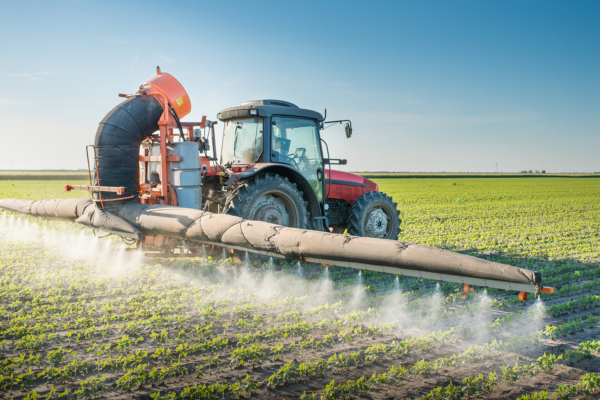GoldCare Townhall
The Pandemic Games: Deciphering the Future of Medical Tyranny
February 11th – 8 PM EST
00
DAYS
00
HOURS
00
MIN
00
SEC
August 1, 2025

In the 1970s, American Secretary of Agriculture Earl Butz ushered in a seismic shift in farming policy with two famous slogans: “Adapt or die,” and “Go Big or Get Out.” Under Presidents Nixon and Ford, his radical vision favored scale, mechanization, and commodity production, transforming U.S. agriculture almost overnight.
Butz believed industrial methods and consolidation would boost productivity, lower costs, and position the U.S. as the world’s agricultural breadbasket. Smaller, diversified family farms couldn't compete, and a wave of bankruptcies, migration, and rural decline followed.
Butz dismantled the New-Deal era controls on supply and prices, painting them as outdated “socialism.” In their place, he introduced direct subsidies tied to production, crop insurance, and low-interest loans favoring commodity grain crops like corn and soy. These incentives essentially rewarded scale. Mega poultry and livestock operations, and their financiers, gained ground. Meanwhile, small farms found themselves squeezed out.
Over time, subsidies did not disappear; they simply changed form, further fueling industrial agriculture. The impact? Small producers lost economic footholds, while corporate agribusinesses flourished.
In communities across rural America, farm losses accelerated. Between 2017 and 2022 alone, over 141,000 farms disappeared—a nearly 7% decline in just five years, according to the USDA’s 2022 Census of Agriculture.
Thousands left their ancestral lands; younger generations flew to cities seeking jobs. Those who stayed often sank into poverty and reliance on government welfare. Small towns hollowed out; their social and economic fabric unraveled.
A justification for aggressive overproduction was to “feed the world.” But in practice, the U.S. sent mass quantities of subsidized grain as aid to developing nations. This flooded local markets, upended regional agriculture, and created dependency on low‑quality, imported food. Local farmers dropped out, and geopolitical leverage—what some call “deep state” advantage—rose alongside American control of the global food supply.
Rather than building sustainable agriculture abroad, it created long-term food insecurity and reliance, benefiting elites more than the poor, but strengthening America’s perceived power.
By emphasizing volume and efficiency, industrial agriculture sacrificed soil fertility and micronutrient richness. Practices like fencerow-to-fencerow planting, heavy mechanization, and petroleum-driven fertilizers and pesticides degraded the land's long-term health.
Even today, many of those toxic chemicals—some banned in other countries—remain in use in the U.S., threatening farmworker safety, consumer health, and biodiversity.
The essay argues for a reimagining of agriculture, away from the one-size-fits-all, scale-first imperatives of the Butz era. It suggests that smaller, diversified farmers should be trusted to produce healthier food, manage animal welfare, and steward the land, provided they receive honest information about nutrition and the freedom to operate without burdensome regulation.
There’s a moral case for empowering local producers, restoring soil health, and decentralizing food systems—all while honoring American values of self-reliance and choice.
The story of “go big or get out” is not just about farming—it’s a cautionary tale about the cost of sacrificing quality, health, and community in the pursuit of scale. Dr. Malone’s essay reveals how federal policies reshaped rural America, weakened ecological systems, and undermined genuine food sovereignty.
GoldCare stands for the opposite: scaling care, not diminishing it. If you believe in a model grounded in human connection, long-term vitality, honest nutrition and wellness, GoldCare is your place. Join us and be part of a movement that values health over size, prevention over protocol, and you over mass treatment. Embrace real care. Click here to join GoldCare today.
Disclaimer: This content is not medical advice. For personalized guidance, please consult a GoldCare provider.
Reference:
“Go Big or Get Out.” Malone.News (Robert W. Malone, MD, MS Substack). Published August 5, 2025. Available at: Go Big or Get Out